Iran’s invisible people: LGBTQ life in a country where being gay carries the death penalty
Former president Mahmoud Ahmadinejad once declared "there are no homosexuals in Iran?" A month spent passing through says otherwise.
By Will Stroude
Always research local laws and customs before travelling. Consult igla.org for up to date information.
This article first appeared in Attitude issue 323, July 2020
Words and photography: Jurriaan Teulings
At a busy restaurant inside an old, atmospheric villa in the Iranian city of Shiraz, my new friend Afshin keeps insisting: “You’re going to die!” I hear you. This is Iran, and what else might I, or anyone, have expected?
His issue, however, is simply that I’m not eating enough. But there’s nothing wrong with my appetite. It’s just that Iranian portions are insane. I thought the fact that I managed to work my way through half a family-sized dish of saffron rice was quite an accomplishment. As for the kebab – let me just say that a few weeks ago, when I boarded the plane to Tehran, I still considered myself a vegetarian.
And this is only lunch. I had mistaken the selection of starters for the full meal, and had already helped myself to a salad of pomegranate and lentils; a bowl of yoghurt with little rolls of fried courgette; a plate of vegetable samosas; and bread with a dip of fried aubergine, onion, walnut and mint. All before the mountainous plate of chelow kebab arrived. I was hardly about to die of starvation. Or of anything at all, in fact.
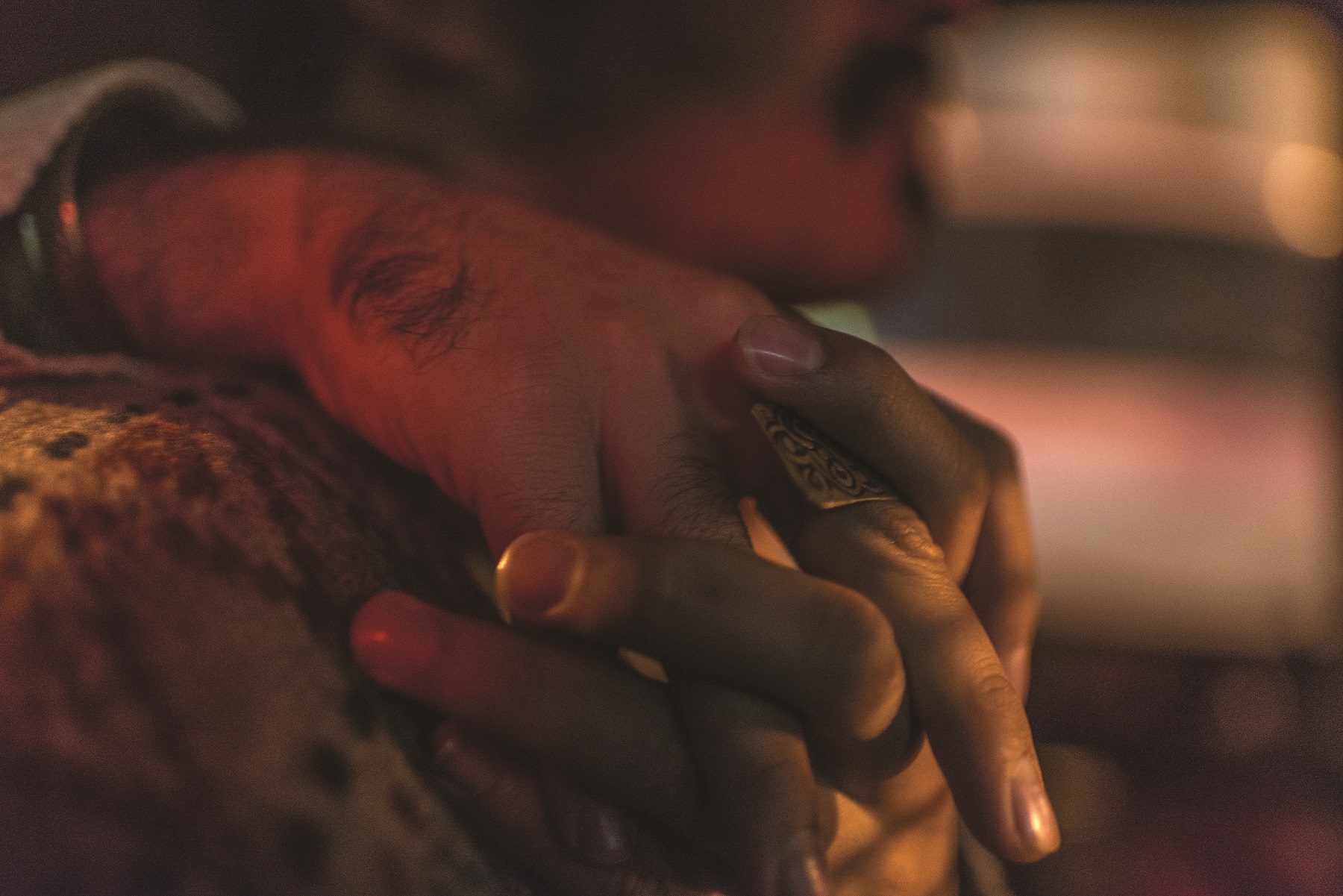
Although the thought of dying in Iran hadn’t occurred to me, I had seen it appear in the eyes of others when I announced my plan to visit this Islamic republic. Go anywhere in the Middle East nowadays and people assume that you’re venturing into ISIS territory. Never mind that Iran is a Shia country.
And, to be honest, this trip took place before the escalation in tensions between Tehran and the White House at the start of this year, though you can choose for yourself which leader looks to be the mad dog looking towards conflict. When not advocating injecting bleach.
But this isn’t new. Since US president George W Bush declared Iran part of the axis of evil, Iran has been the subject of a particularly damaging narrative that equates ordinary Iranians with their oppressive government. Taken to its extreme, this assumes that everyone in Iran is a frothing-at-the-mouth religious fanatic, eager to unleash radical Islam and its associated terrors upon the world. Or at the very least, upon those who come to visit. And if you’re gay? Forget it.
But here I was, touring the 4000-year-old city of Shiraz with a new gay friend. We met casually at a dinner party, and the only extremist attitude I had encountered so far concerned hospitality; the only murderous bent I could discern was a propensity to feed visitors to death. Afshin had only been joking, of course. Our luncheon quibble marked just another day of friendly arguments about me not eating enough, or trying to pay for something.
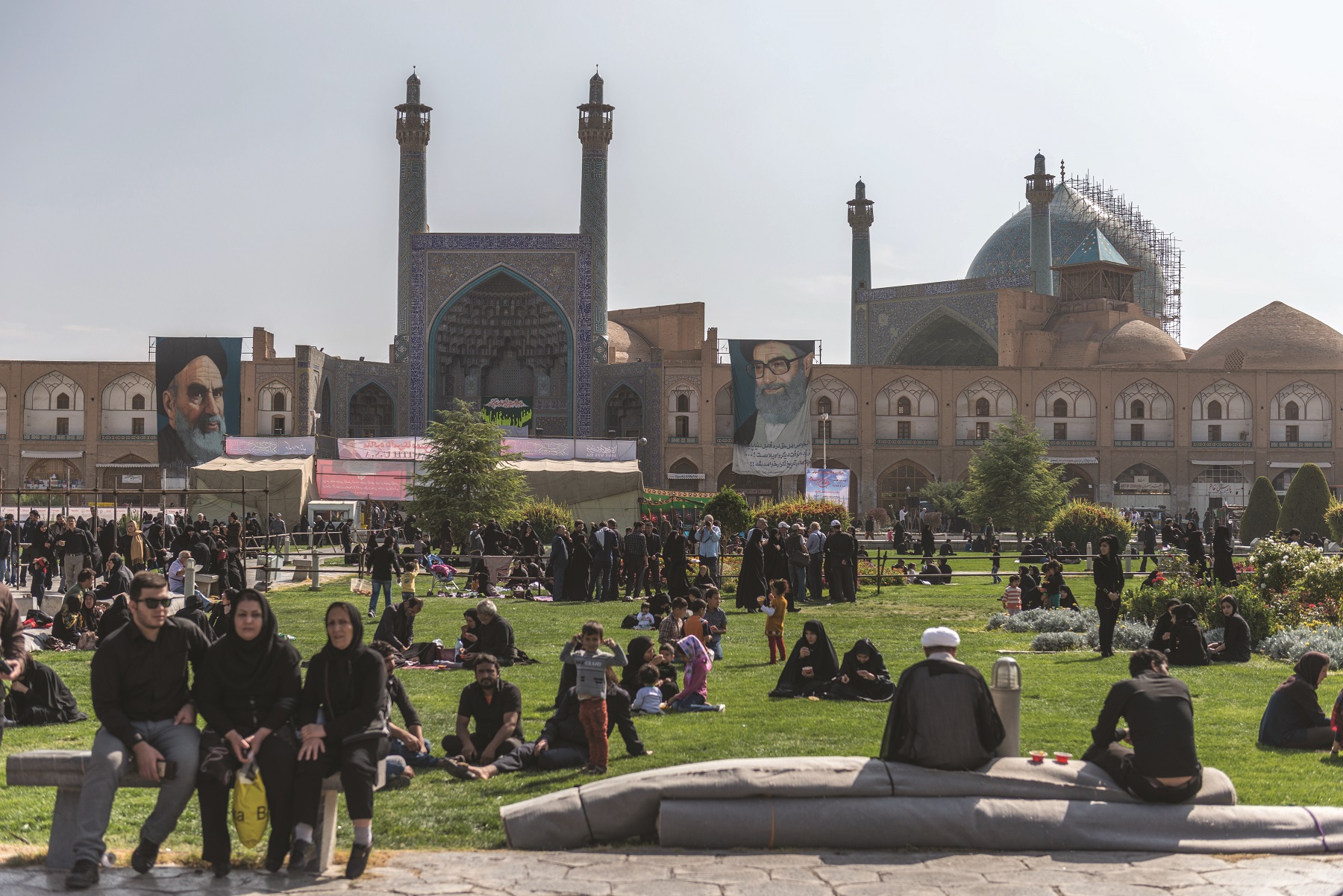
The UNESCO site Naqsh-e Jahan Square in Isfahan
The fact that Afshin would insist on paying for every meal, entrance fee, and even some souvenirs I wanted to buy, was all part of a game called taarof. This uniquely Iranian brand of etiquette has everyone insisting on extending favours on one side, and refusing to accept them on the other. It’s a game guests are supposed to lose. Iranian tradition prescribes an almost fanatical degree of friendliness to guests, and travellers like me are treated like gods. Though in Afshin’s case, that’s about where his religious devotion ended.
Earlier, at a little souvenir shop inside the historic Qavam mansion, a palatial merchant house in central Shiraz, he had come upon a transcript of the Cyrus Charter, and sighed. Many Iranians, though not all scholars, consider the 25 centuries-old charter from the Persian king Cyrus the Great as the world’s first declaration of human rights. It dates all the way back to a time when the Persian empire stretched from the Mediterranean across Central Asia to modern-day India, more than a millennium before the Arab invasion that brought Islam. Along with millennia-old cities and ruins scattered over humanity’s cradle of civilization, it had given most Iranians I had met a keen sense of history, and the sort of post-empire pride I had only previously noticed in Italians.
“Before Islam arrived, everything was good,” Afshin had said, looking at the charter. To be fair, the 19th-century mansion, adorned with intricate mirrored ceilings and paintings of men wearing heavy eye makeup and long flowery garments, suggested that tides of tolerance were the norm in Persia until much more recent times. The imagery reminded me of my visit to Isfahan a few weeks earlier, where the local guide had pointed at a mural inside the auditorium of Chehel Sotoun, a huge 17th-century royal pleasure pavilion.
It depicted same-sex couples – both gay and lesbian – at the court of the Shah, the ruler of Iran. Of course, he might have read too much into it: one young man was pictured lying flat on his back with his head on the lap of his older companion, who was dropping a piece of fruit into his mouth. They might have been just good friends, right?
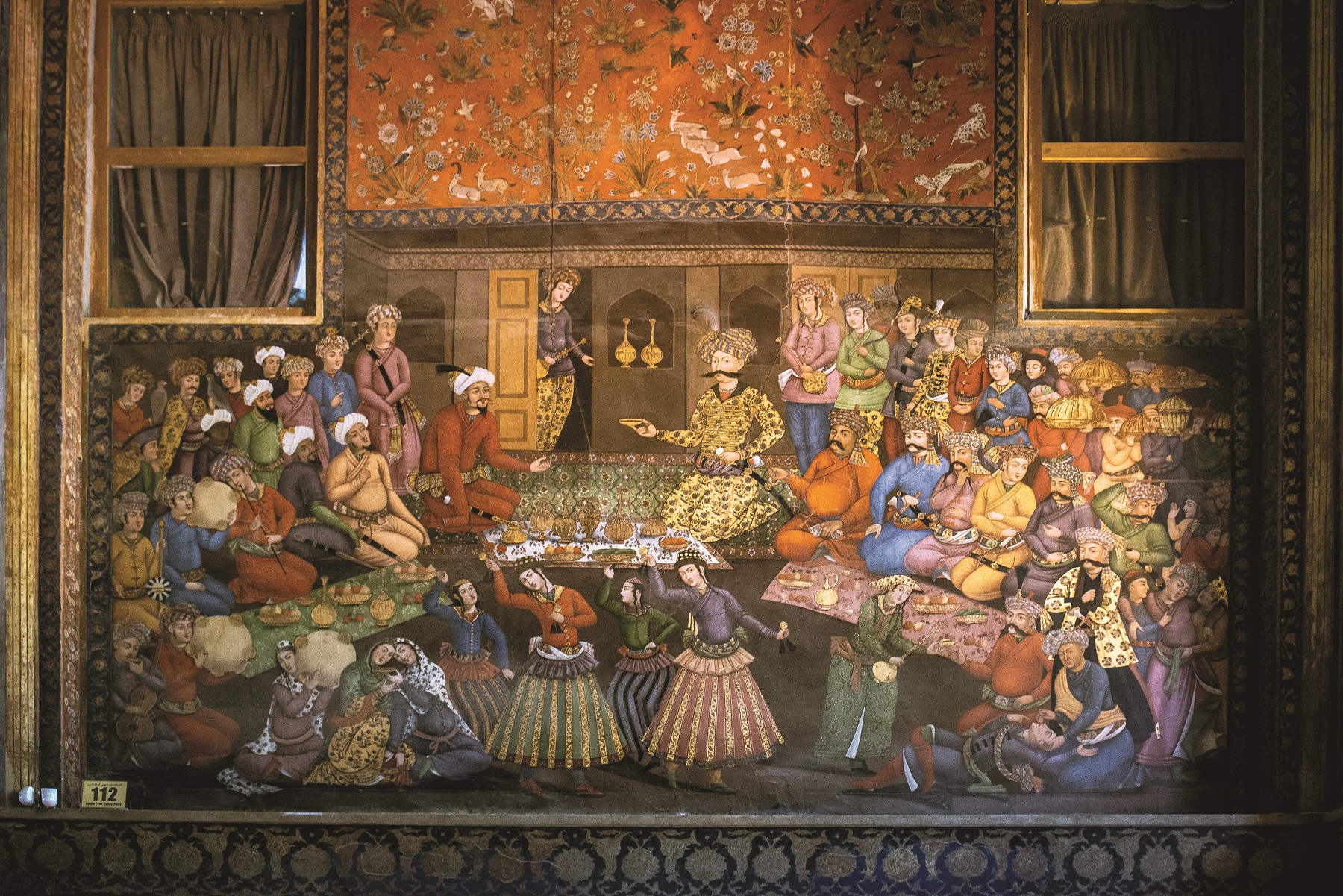
Artwork in Chehel Sotoun, Isfahan
On closer inspection, this was not the only Islamic taboo depicted on this increasingly hedonistic-looking mural: there was wine, too. By most accounts (although perhaps not French), wine was originally ‘invented’ in the Persian empire. Since the Islamic Revolution in 1979, however, Iran’s sharia-based law prescribes 80 lashings for those who drink alcohol. This, I was told, was the reason why modern-day Shiraz, once the wine capital of Persia, no longer lived up to the promise that its name engendered. Such was the official tourist guide story. But if I had learned anything in the past weeks travelling through Iran, it was that the official story is rarely the full story.
Before the revolution, there were hundreds of wineries in Iran, and when they were banned, production simply moved underground. Nowadays there is a lot of home-made wine. I had already witnessed that on my first night in Shiraz. This is how I met Afshin: at a dinner party at the apartment of his friend Ali, a poet, translator and tourist guide, who had invited me to stay with him through a mutual friend. On the day of my arrival he had shown me how he was making wine in his own kitchen.
“You crush grapes, leave them to ferment, stir every three days, and after 40 days, you’ve got wine,” he had explained, pointing at a large glass container in a corner of his kitchen. The same night, he invited a group of gay friends, and we ate, drank and talked politics, with music videos of Lady Gaga and Mashrou’ Leila projected on a large screen on his living-room wall. It was my first gay party in the Islamic Republic.
“You haven’t seen anything yet,” one of his friends said. “We have better gay parties than in San Francisco.”
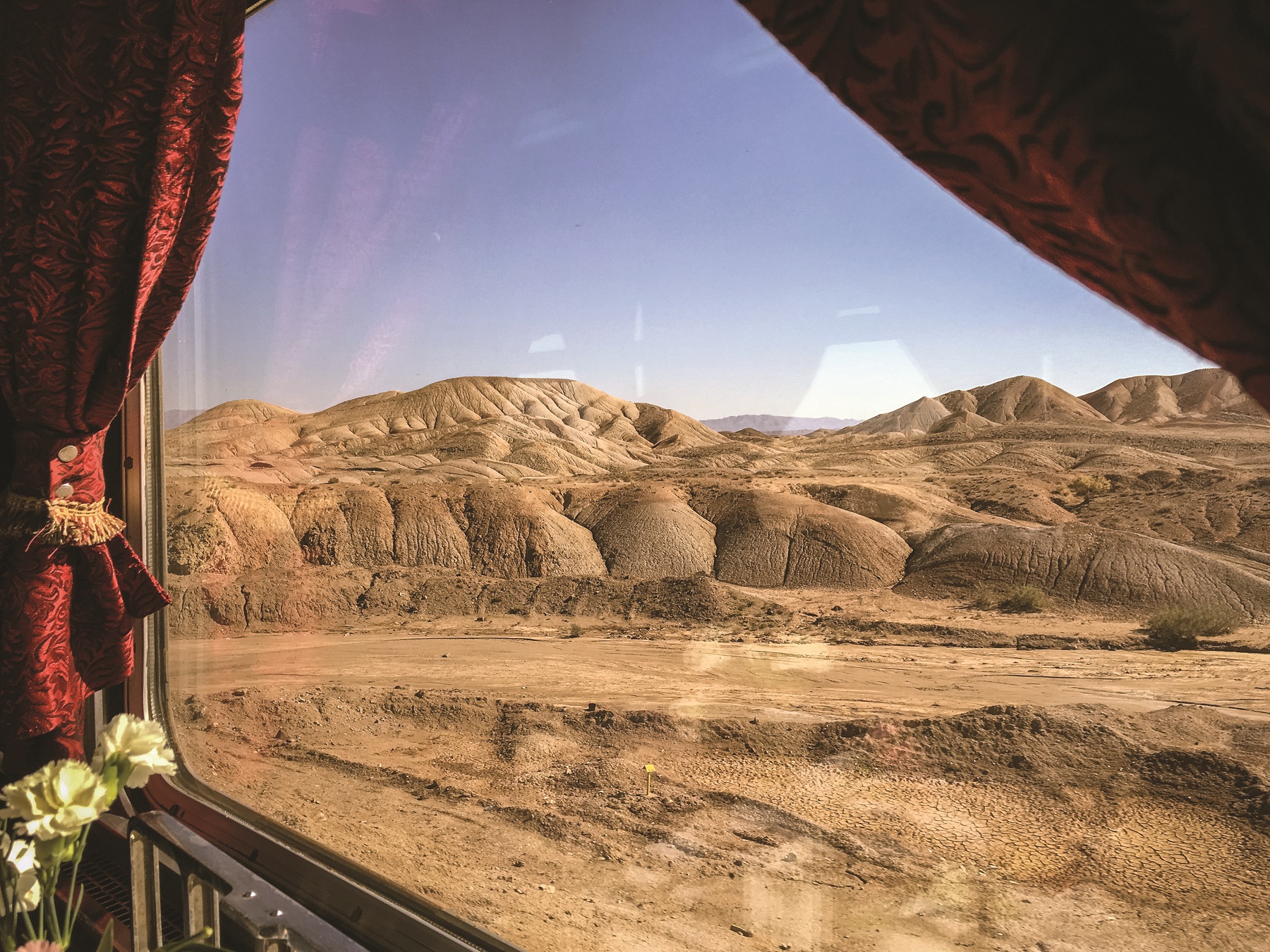
Sandscapes in the Kavir Desert
By this time, I was already three weeks into my Iranian trip. In the first week of my month-long stay I had grown a little restless. Not because of the lack of alcohol, mind you – I was expecting that. I had come to write about a 12-day journey by private train, hitting all the important historical and religious highlights in the well-heeled company of British and American tourists. Their visit had been quite a spectacle, and the national press was making a big deal of it. A TV crew had joined to make a documentary of the trip. Some of the tourists suspected the crew were really government spies.
But a few days into the journey, I noticed how the fast-paced itinerary was getting in the way of any meaningful interactions – the simple pleasures of experiencing everyday life and chatting with curious locals you might meet along the way. Sometimes luxury travel keeps you in a cage like that. I watched the gorgeous and diverse desert landscapes through my train window, and toured the magnificent gardens, mosques and palaces of millennia-old cities in a tightly packed group, herded from one comfort to another.
Even in this rush, the pervasive eagerness of ordinary Iranians to welcome foreigners was hard to miss. At the end of every day, I would retreat to my hotel room with the phrase ‘Welcome to Iran’ still ringing in my ears. Short conversations with the people that approached to shake hands revealed a strong desire among ordinary Iranians to show that their society isn’t as backward as they feel it has been portrayed in Western media, nor as religiously fanatic as the ruling elite. The answer to “Are you British or American?” was always followed by a heartfelt “Welcome!”, even if the banners suspended from a nearby building were calling for the demise of America and the UK. “We hope you don’t think we are all terrorists,” they’d say.
Some of this I had been expecting. Most travellers I had spoken to who had been to Iran told me it was the friendliness and sometimes remarkably liberal attitudes of ordinary Iranians that were their most cherished memories of the country. It was the reason why I had decided to stay for the full duration of my one-month visa: two weeks in a group, two weeks by myself. It was becoming obvious that although the historic heritage and natural beauty of Iran was accessible to all, if I wanted to learn anything about modern-day Iran, I’d have to find a way to get behind closed doors.
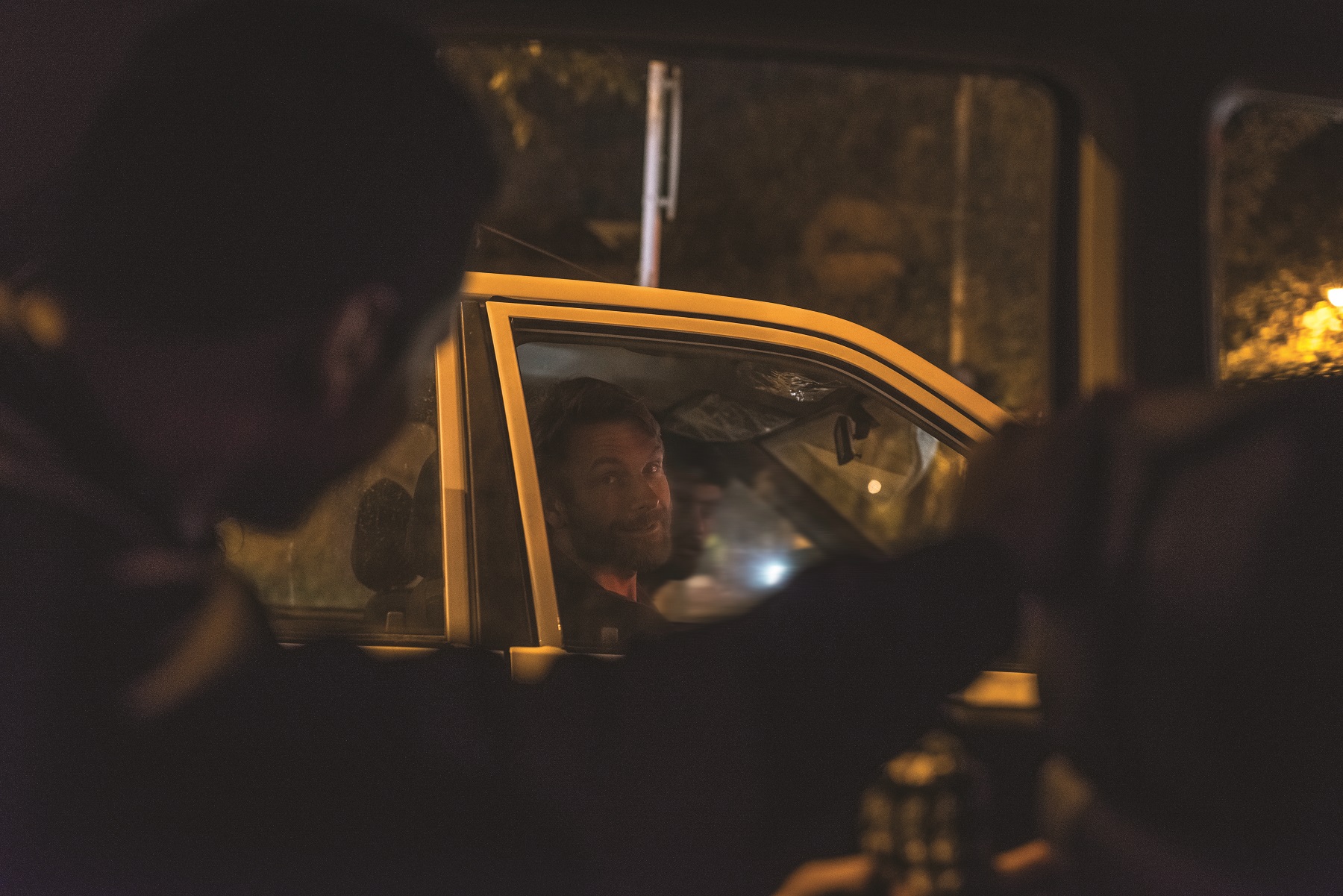
This was starting to look a lot easier than I thought after I met a German traveller who was hitchhiking his way through the country. He had used Couchsurfing.com’s social platform to connect to local hosts who gave him a place to spend the night, he made friends, stayed at people’s homes, and was even invited to a gay party which he hugely enjoyed, even though he was straight himself.
I never thought I might meet gay people in Iran. “Err on the side of caution,” my guidebook’s LGBTQ advice for Iran read. Given that sharia law prescribes the death penalty for homosexual acts, that seemed an understatement – people would have to be deeply closeted just to survive.
The first stop on the group itinerary had been Mashhad. This city, close to the Afghan and Turkmen borders, is one of the most important sites in Shia Islam, thanks to the Imam Reza shrine, a sprawling religious complex that includes the largest mosque in the world, museums, seminaries, dining halls and a library. It is the Mecca of Shia Islam, attracting millions of pilgrims every year.
To me, however, the name Mashhad invoked a memory of the horrors of religious anti-gay fanaticism. In 2005, the city was the site of a particularly gruesome public hanging of two teenagers. According to the local authorities, the 16- and 18-year-old boys were rapists. According to initial reports in the Western media, their only crime was engaging in consensual gay sex. I had planned a little pilgrimage of my own, to the square where they were executed.
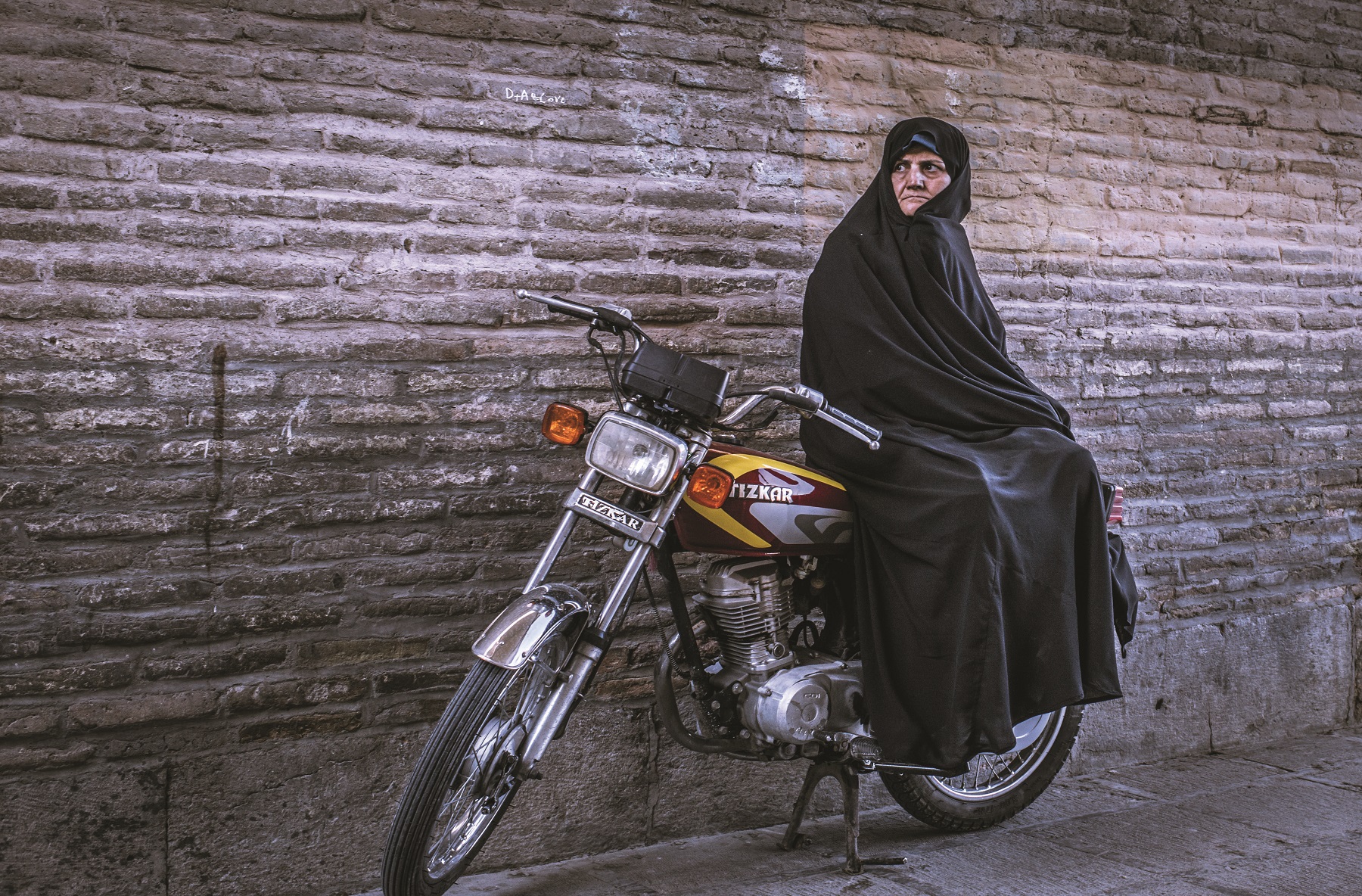
Wearing a ‘chador’ (cloak) in public is compulsory for Iranian women
I remembered the international outcry. Pictures of the boys, nooses already tied around their necks, were held high at gay pride marches all over the world that year. But I had no idea where the square might have been and the jam-packed group itinerary allowed very little time to find it. The name I had found in old news reports didn’t show up on any maps, and “Which way to the square where you hang gay people?” wasn’t the sort of thing you’d go asking for in the street. So I tried Grindr.
I figured it would be a long shot. Internet speeds are intentionally throttled in Iran and, to make matters worse, about half of the most popular websites in the world – including YouTube, Facebook and Twitter – are behind the Iranian firewall. The firewall is fairly easily circumvented with VPN apps that most Iranians have installed on their phones. One woman – I met her on Facebook, so she obviously knew what she was talking about – even gave me her password to a VPN service that she paid for (the Iranian hospitality extends to interactions on social media, too). The only downside was that with the VPN working, connections often ground to a halt. So imagine my surprise when it turned out that Grindr wasn’t even blocked. It was working just fine.
Indeed, in one of the most religious cities of Iran, under an undeniably fanatic regime and sharia law that prescribed death to sodomites, Grindr seemed to be thriving. Scores of men were remarkably unafraid to show their faces on their profiles.
“The police have better things to do than to case us,” one of them said. When I started asking around for the location of the square, the younger men had no idea what I was talking about. Those in their 30s vaguely remembered the incident as a misrepresentation of facts. Nobody could tell me where the execution had happened. Perhaps the awful truth had been kept from them in a successful campaign of censorship and misinformation.
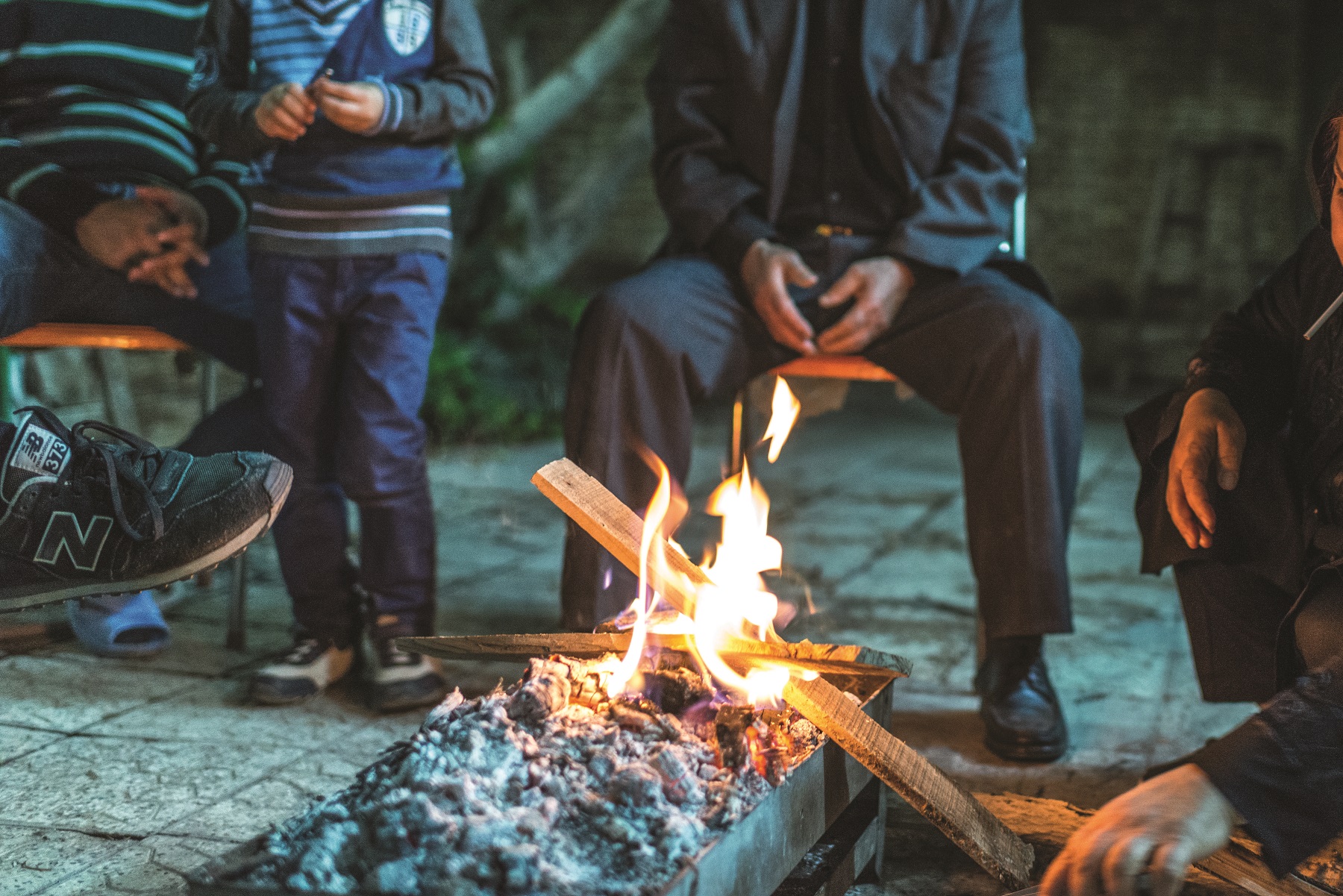
Or perhaps I was the one who was misinformed? After the initial outcry, it had become clear that the facts in this case were considerably more ambiguous than they originally appeared in the Western media, who propagated a story that was based on questionable assumptions. Yes, even if the boys were indeed rapists, it was still a violation of international law to execute juveniles. But somehow I had missed that both Human Rights Watch and International Gay & Lesbian Human Rights Commission had since stated that they didn’t believe it was a ‘gay case’. The fact that the incident didn’t stick with the local gay community would support that.
The next day I ended up at the sprawling Imam Reza shrine complex, just like everyone else. It was the first of many marvels of religious architecture on the itinerary, and gloriously beautiful. Especially the inner courtyard, where I wasn’t supposed to be. Attracted by the gold-plated, barrel-vaulted entrance leading into the mausoleum, I accidentally wandered into an area that was technically off-limits to non-Muslims. I must have stuck out like a sore thumb, but nobody seemed to mind. Not even the guards, who were comically armed with bright feather dusters to direct the crowds.
They might just have been preserving their energy, bracing themselves for the five million pilgrims the shrine was expecting a few days later, on the holy day of Ashura. By that time, though, I would have arrived at the city of Isfahan, far away from the religious stampede.
From Mashhad, the train took us 1,200 kilometres through the Kavir desert, with stops for excursions to adobe citadels, Persian gardens and ancient Zoroastrian ruins. In dusty Silk Road cities, we marvelled at the psychedelic mosaics of great mosques, and visited the tombs of venerated poets and Sufis (a group of spiritual Muslims). Meanwhile, the country was gearing up for Ashura – the day when Shia Muslims mourn the violent death of the much-loved Imam Hussein from the 7th century, which is not unlike Good Friday in Christianity, with a good deal of drama.
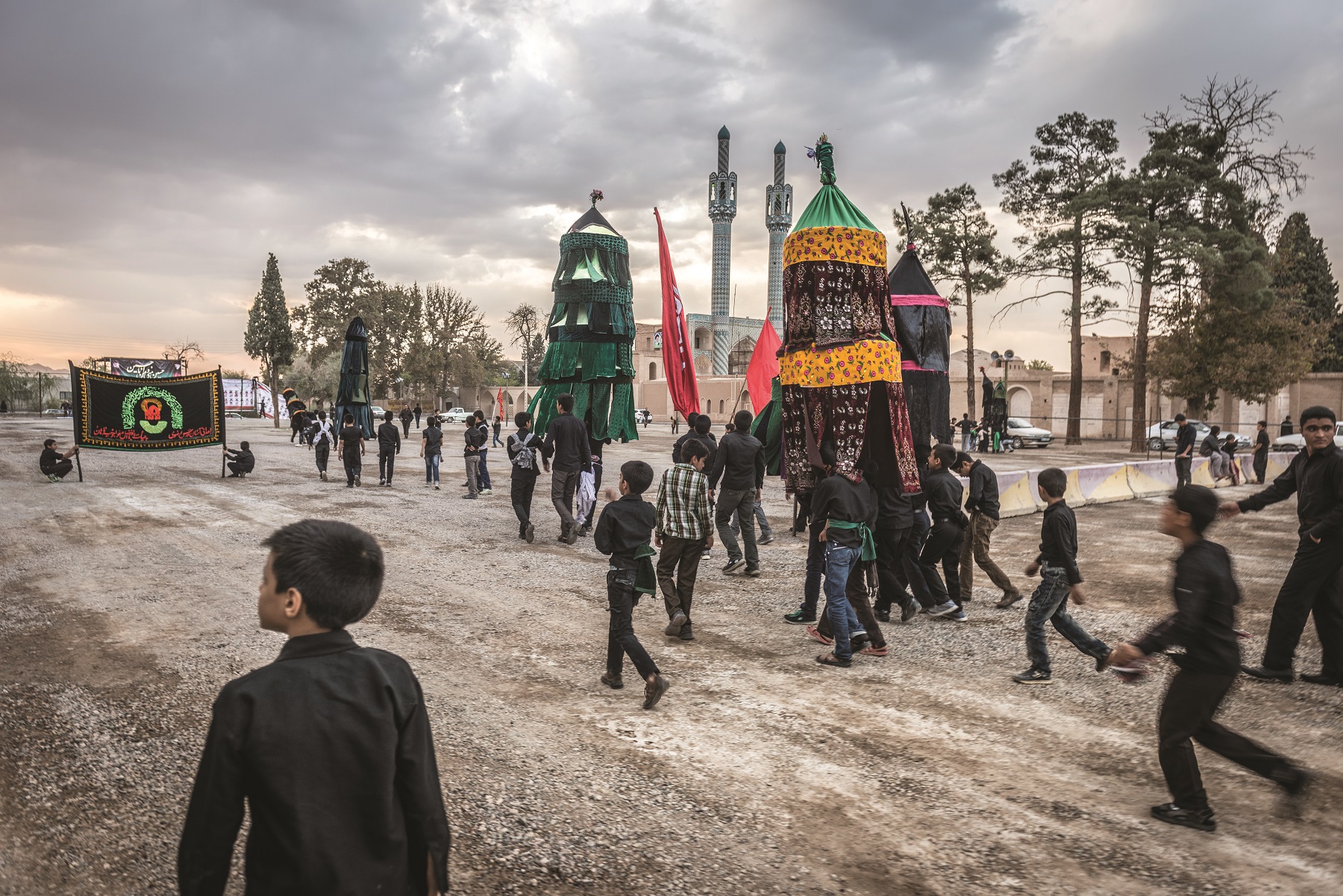
Ashura: In this annual festival, men mourn the death of Imam Hussein, grandson of the founder of Islam, the prophet Muhammad, back in the seventh century
Processions of men dressed in black marched through the street, self-flagellating with metal chains to the beat of drums and chants through loudspeakers. There were black flags everywhere. The water in fountains was dyed blood-red.
In Isfahan, we checked into the glorious Abbasi Hotel – a former Silk Road caravanserai (the kind of inn that lodges both men and camels) that now bills itself as the oldest luxury hotel in the world. Because of Ashura, many of the sites and shops were closed, leaving the group itinerary empty for the late afternoon. Eager to escape the comfortable but limiting bubble of organised travel for a few hours, I decided to get in touch with a guy I had met in Couchsurfing’s Isfahan group. He offered to show me around and came to pick me up from the lavish, gold-plated hotel lobby.
Within an hour, I was enjoying a comfort that money can’t buy: the warmth of family life. Four generations of his friend’s family were gathered around a fire in their courtyard. I wasn’t the only foreigner: there were about seven other Couchsurfing invitees – and we were all offered an endless, home-cooked meal that was completely different from the kebab-heavy hotel buffets that I had been growing tired of. The portions, as you might expect, were still formidable.
Later, we all piled into two friends’ cars and drove to a mountain park where we watched the shimmering city lights and smoked weed. We talked politics and rhinoplasty.
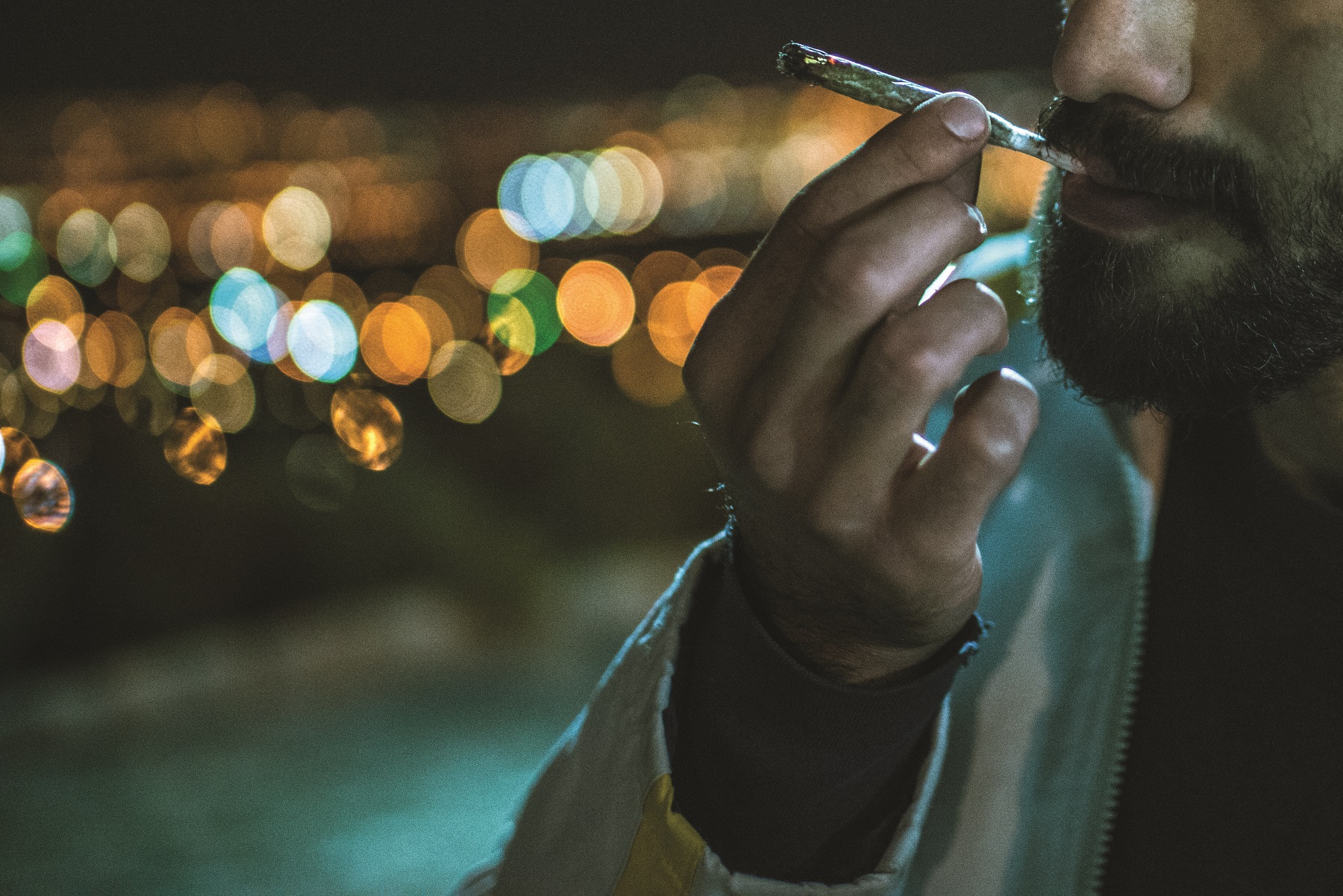
“Our country has such great potential, but our regime ruins everything,” one of my new friends, a 23-year-old aspiring actor, said wistfully. “People are insecure and they’re obsessed with their noses.” He was referring, it transpires, to the fact that Iran is a world leader in nose jobs. Who knew? Not a day had gone by that I hadn’t seen at least a few people with bandaged noses passing in the street. A friend working in the Iranian film industry told me that casting for historical dramas was a nightmare nowadays, because actresses with historically accurate noses had become an endangered species.
Ironically, under a regime that discourages personal expression and disdains Western culture, young Iranians eagerly changed their noses to model images in European and American fashion magazines. Anyone who has ever followed the Rich Kids of Tehran on Instagram knows what I’m talking about – though this phenomenon is by no means limited to the rich. Or Tehran, come to think of it.
Despite their obvious pride in their country and culture, a lot of these men were eager to leave Iran, as many of their friends and family members already had. I was reminded of this at the dinner party in Shiraz, when Ali changed the music videos on his projection screen to show pictures of parties from recent years. A lot of the friends in the pictures had since fled the country – often to North America by way of the UN in Turkey.
Afshin and his boyfriend were planning to leave, too, and Ali’s boyfriend, who couldn’t afford to wait two years for asylum, had decided to try his luck with the refugee boats from Turkey to Greece. One of the reasons Afshin gave me was that police in Shiraz had recently started busting more and more gay parties.
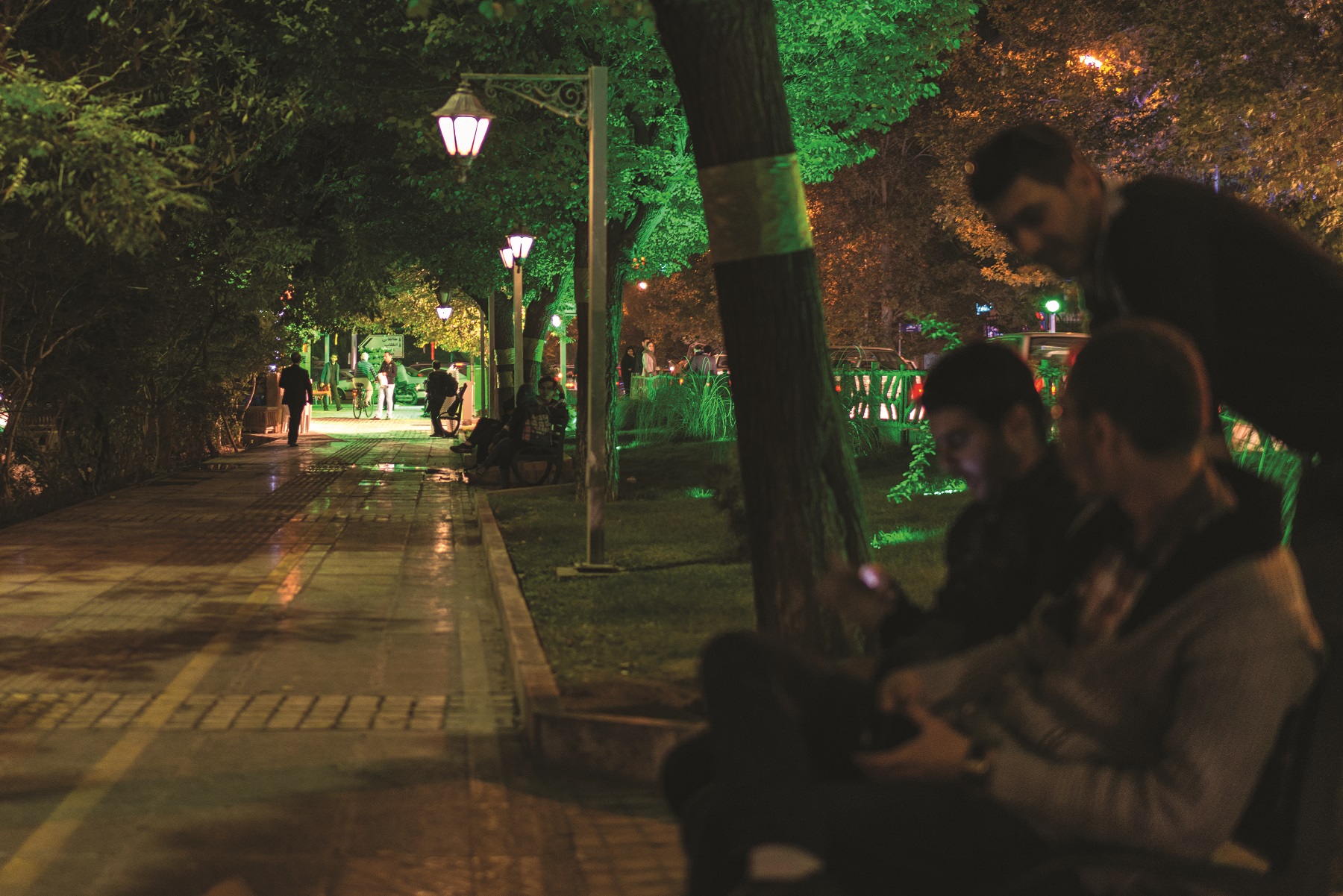
After dark: Daneshjoo Park is a popular cruising spot
“Every time we are worried,” he said. “We still do our job, but we are worried.” The men who were arrested were released after a while, but their families were told that they were ‘hamjenz bāz’ – a very offensive name for homosexuals. For some, their families knowing – or no longer being able to ignore – their sexuality could prove more dangerous than the courts of Iran.
Five years ago, Ali was an outspoken advocate for gay rights, women’s rights, free speech and education for all. But after he indirectly called the Supreme Leader Ayatollah Khamenei a dictator in one of his poems, he was arrested and spent 19 days in solitary confinement on charges of Marxism and Atheism – both punishable by death. At the time, the police also informed him they had tapped the phone conversations he had with his boyfriend and knew that he was gay. Thankfully, he was released, but only after his family posted a 30,000-dollar bail, and his parole lasted four years.
Although he admits that it was a traumatising experience, Ali remains defiant: “It’s how they control society: you arrest someone, scare him to death, and then release him so he will tell all his friends that they are being watched and have to be careful.”
This happened under former president Ahmadinejad, since replaced by the more moderate Hassan Rouhani. “With Rouhani in power, we were initially full of hope for change,” Ali told me. There was a time when he had signed a deal with world powers after it was confirmed that Iran had curbed its nuclear programme, which Rouhani described as a ‘golden page’ in the country’s history, that things felt different. The British Embassy in Tehran had reopened, the economic sanctions against the regime had been lifted.
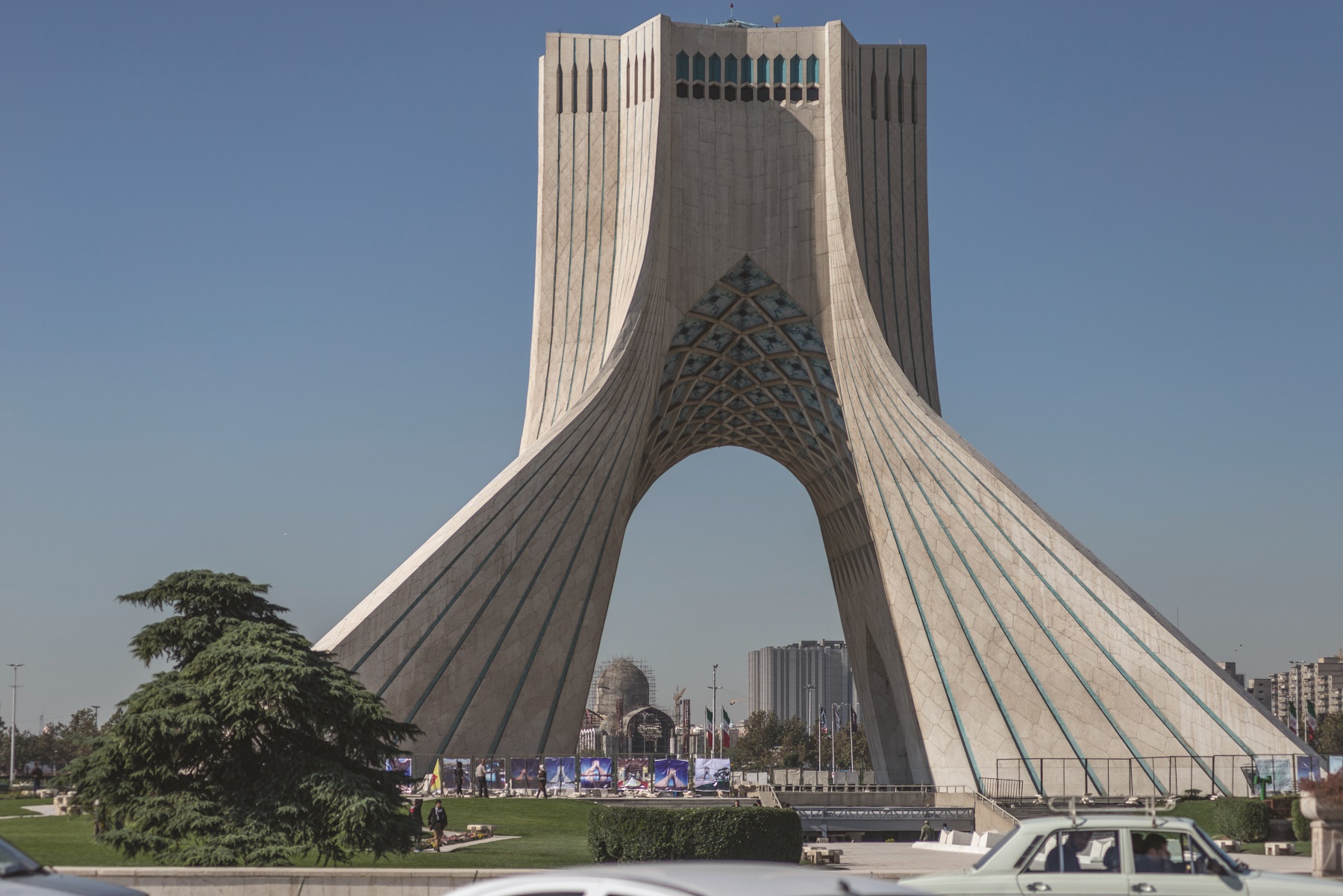
The Azadi Tower is Tehran’s most famous landmark
But the post-Trump world has regressed in terms of Iran’s relationship with the US and the wider world. And so the official anti-Western rhetoric in the streets of Iran has returned, and prevails. And to be fair, the same President has fuelled the anti-Iranian rhetoric in the West, too. But privately, nonetheless, many Iranians profess a love, not hate, of countries like the UK and the USA.
In fact, part of the Iranian diaspora has started to trickle back to the home country. Especially in Tehran, where I met American and British Iranians who were born and raised abroad, who came back to the country their parents had fled to study, or set up businesses.
At a gay party in an affluent neighbourhood in Northern Tehran, I met a guy who moved to the US when he was in his late teens, but had recently returned. On the one hand, he simply missed his family too much. But on the other, life in American cities was so hard nowadays. High rents and pressing college debts had proven that the promise of moving out of the country and making a lot of money was an illusion. “I’m enormously relieved to be back,” he told me.
The party was like any you might expect in any modern city in the West, with a crowd of good-looking twenty-somethings and a steady flow of alcohol and drugs. The differences were the secrecy, the prohibition-style beverages, and the threat of corporal punishment. Booze is smuggled in, or home-made, like aragh saghi – literally ‘dog alcohol’ – a potent moonshine made from raisins. Meanwhile, drug dealers can deliver anything, at any time of night. The friend who had invited me to the party was wearing a jumper with the word ‘snow’ written in Persian across his chest – which didn’t just refer to his love of crystallized precipitation.
“There is no specific rule against cocaine in religious scripture,” he said. “But for alcohol, there is. So if there is a police raid, you better hope you’re caught with drugs rather than with booze.”
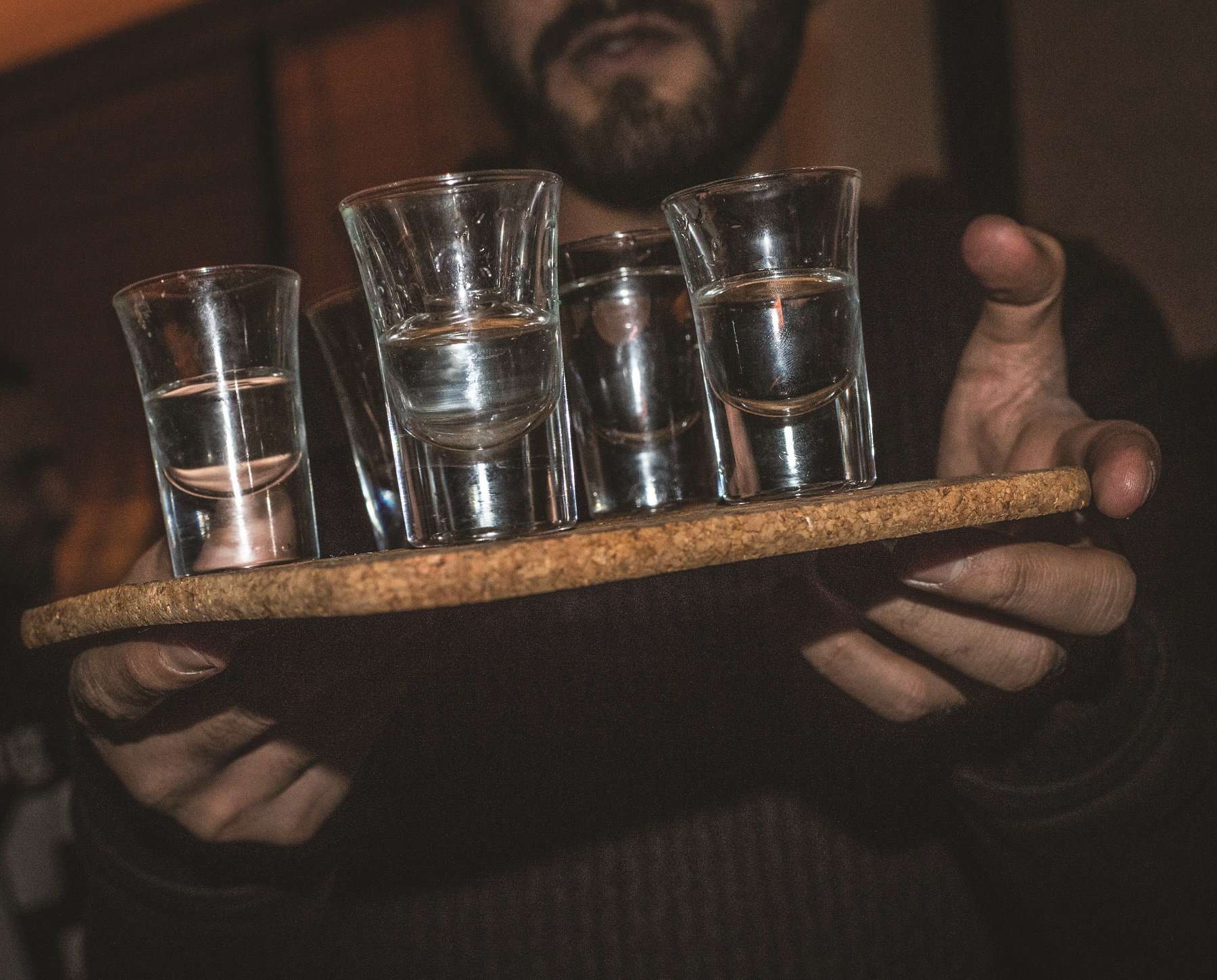
Forbidden fruit: Homemade ‘aragh saghi’, or dog alcohol, is made from raisins
It’s difficult to imagine the horror of receiving 80 lashings for having a drink at a party. For repeat offenders, there’s a death penalty. But the party-goers remain remarkably defiant. “The risk makes it more exciting,” my friend said. “In 95 per cent of the cases, the police just want a bribe. But yes, there’s always that five per cent.”
Barsaam, my Couchsurfing host in Tehran, was a friend of Ali – also a poet, and a student of English. He shared an apartment with a straight friend, who didn’t mind joining his group of gay besties at the neighbourhood café to gawk at the handsome men who gathered there to watch sports and smoke hookah. He eagerly taught me about the history, religions and cuisine of Persia. In his kitchen, he showed me how to prepare Caspian and Shirazi dishes while we listened to music based on the poems of Rumi, the 13th-century father of Sufism – a branch of Islam focused on meditation and spirituality – who is believed to have been gay. His own religion, however, was the ancient Persian version that predates both Christianity and Islam and uses fire as a medium for insight and wisdom: Zoroastrianism.
To show me what that was all about, he took me to Tehran’s main fire temple. Before we left his apartment, he donned the traditional undershirt that all Zoroastrians are supposed to wear under their clothes – while Britney Spears was blaring from his sound system. What started with “It’s Britney, bitch,” ended in all-white garments and a protective cloth mask at the temple, where Barsaam devoutly performed his rituals while an elderly caretaker tended to an eternal fire. Afterwards, he pointed at the winged symbol of Zoroastrianism above the temple door – the faravahar. “It represents the human spirit and is still Iran’s national symbol,” he said. “It is genderless and without sexual orientation. That means that in Zoroastrianism, it doesn’t matter who you are.”
On my last morning in Iran, Barsaam joined me on a visit to Daneshjoo Park. Like city parks around the world, it is a popular cruising spot, but I wanted to see something else – an intriguing piece of gay history that Ali had mentioned at his dinner party in Shiraz.
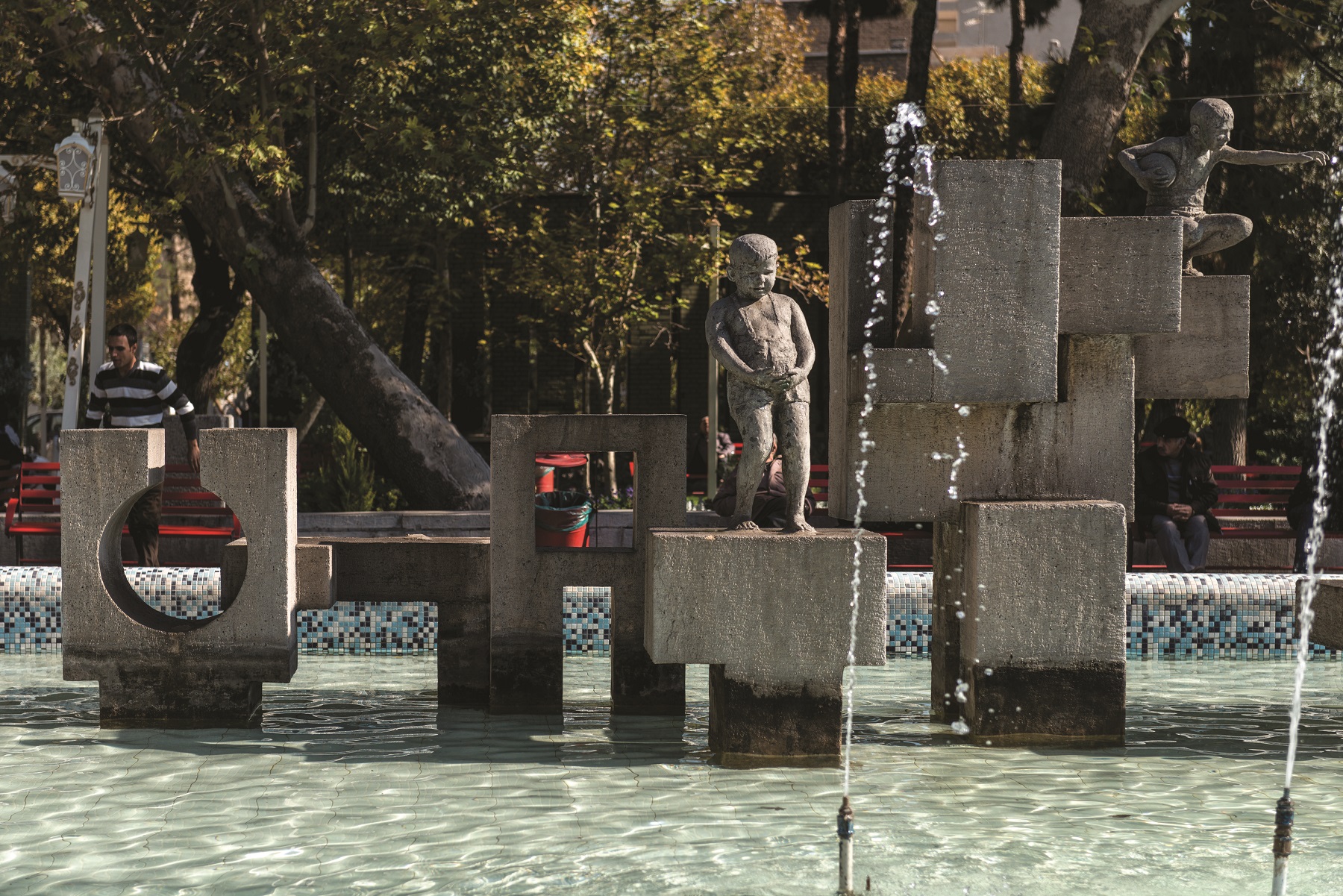
The fountain in Daneshjoo Park, designed by gay architect Bijan Saffari
The park had been designed in the 1970s by a man named Bijan Saffari, who was one of Iran’s most celebrated architects at the time, and a close friend of the queen. He was also openly gay, and before the country began its mad race to the dark ages that followed the Islamic Revolution, he even celebrated a faux gay wedding with his partner.
As a final act of defiance, he designed the fountain in the park in a peculiar way. Admittedly, I had to squint to see what Ali had been talking about. But once I was standing right in front of it, it was unmistakably clear.
Right in the middle of one of the best-known parks in the capital of the much-dreaded Islamic Republic of Iran: a fountain that spelled the word G.A.Y. Hidden in plain sight. A fitting metaphor.
